In 1940, the British and French were going to bomb the USSR
Bombing Soviet oil fields should have been Halifax-type bombers, but their entry into the troops began only in November 1940.
Almost immediately after the start of the war between Germany and Poland, in which the USSR took part from 17 in September of 1939, the Anglo-French allies paid attention to the Baku oil fields and searched for possible ways to disable them.
By the beginning of World War II, the Baku oil industry produced 80% high-grade aviation gasoline, 90% naphtha and kerosene, 96% autotractor oils from their total production in the USSR. The theoretical possibility of an air attack on Soviet oil fields was first considered in September by an 1939 liaison officer between the General Staff and the French Foreign Ministry, Lieutenant Colonel Paul de Willleum. And on October 10, French Finance Minister Paul Reynaud asked him a specific question: Can the French Air Force "bombard oil development and oil refineries in the Caucasus" from Syria? In Paris, it was meant that these plans should be carried out in close cooperation with the British. The US Ambassador to Paris, William C. Bullitt, who was, incidentally, the first time the first US ambassador to the USSR, was also notified of these plans by the head of the French government Edouard Daladier and other French politicians in connection with the signing of the mutual assistance agreement on October 19 between England, France and Turkey. He telegraphed to Washington about a discussion in Paris of the possibility of "bombing and destroying Baku." Although the French agreed on their plans with the British, the latter were not far behind them in developing their similar projects.
11 January 1940, the British embassy in Moscow reported that the action in the Caucasus could “bring Russia to its knees as soon as possible,” and the destruction of the Caucasian oil fields can inflict a knockout blow on the USSR.
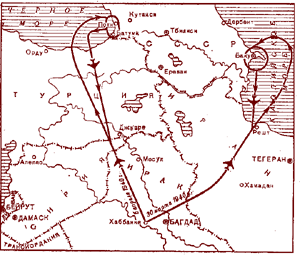 30 March and 5 April 1940, the British carried out reconnaissance flights over the territory of the USSR.
30 March and 5 April 1940, the British carried out reconnaissance flights over the territory of the USSR.On January 24, the chief of the imperial general staff of England, General Edwin Ironside, the same one who headed the British mission in Arkhangelsk during the years of military intervention in Russia, presented the main strategy of the war memorandum to the military cabinet, which indicated the following: “in determining our strategy in the current situation it will be the only right decision to consider Russia and Germany partners. ” Ironside emphasized: “In my opinion, we can provide effective assistance to Finland only if we attack Russia from as many directions as possible and, most importantly, strike in Baku, the region of oil production, to cause a serious state crisis in Russia ". Ironside was aware that such actions would inevitably lead the Western Allies to war with the USSR, but in the current situation considered this to be completely justified. The document emphasized the role of English aviation to implement these plans, and in particular it was indicated that “economically, Russia is heavily dependent on the supply of oil from Baku in the conduct of the war. This area is within the reach of long-range bombers, but on condition that they have the ability to fly over the territory of Turkey or Iran. " The question of the war with the USSR moved to the highest military-political level in the leadership of the Anglo-French bloc. On March 8, a very important event took place in the context of the preparation of the war with the Soviet Union of Great Britain and France. On this day, an English committee of chiefs of staff presented to the government a report entitled "The military consequences of military operations against Russia in 1940."
The main heavy bomber of France was Farman-222. His tactical and technical data did not leave him any chance in the face of Soviet fighters.
20 March 1940 was held in Aleppo (Syria) a meeting of representatives of the French and English commands in the Levant, which noted that by June 1940 the construction of the first category 20 airfields would be completed. 17 April 1940 Mr. Weygan informed Gamelin that the preparation of the air strike would be completed by the end of June - the beginning of July.
30 March and 5 April 1940, the British carried out reconnaissance flights over the territory of the USSR. Shortly before sunrise 30 March 1940, Lockheed 12A rose from the Habbania base in southern Iraq and headed for the northeast. At the helm sat the best Royal Air Force scout pilot Australian Sydney Cotton. The task assigned to a crew of four, commanded by Hugh McFail - Cotton's personal assistant - was to air reconnaissance of the Soviet oil fields in Baku. At an altitude of 7000 meters, Lockheed did circles above the capital of Soviet Azerbaijan. The shutters of automatic cameras clicked, and two crew members - photographers from the Royal Air Force - took additional pictures with hand-held cameras. Towards noon - after 10 hours - the spy plane landed in Habbania. Four days later, he again took to the air. This time he made a reconnaissance of oil refineries in Batumi.
The date of the first bombardment was scheduled for July 1st. However, the plans of our future allies were destroyed by the German offensive against France. So let's imagine that the Germans, for whatever reason, abandoned the ular in France or moved it to a later date. Or this blow did not bring the Germans a quick victory, and the fighting took a positional character. How much would the Anglo-French bombardment of the Soviet Union cause real damage?
American aircraft bombed the Romanian oil fields 1 August 1943 of the year. Of the 143 aircraft, the 55 was lost.
Everyone knows that the attempts of the British and Americans in 1942-44 to bomb oil fields in Romania did not lead to the expected effect even when Germany was forced to remove all planes from Romania in order to compensate for the losses on the fronts and protect the sky of Germany. Romanian aviation, equipped with old French fighters, successfully fought undisguised fighters by the Allied bombers. So, during the operation of Tidal Wave - a massive raid on Ploiesti 1 in August 1943 of the year 143 B-24, which took part in the raid, returned to the base only 88. The 55 aircraft, that is, 38,4% of the total, were lost: 44 vehicles were shot down, and 11, after being damaged, sat in neutral Turkey and were interned with crews. In 1940 the same year, the British, and especially the French Air Force were equipped with far less sophisticated aircraft than the B-24. The basis of the French long-range bomber aircraft were Farman-222 type aircraft manufactured in 1932-38. They had a 320-kilometer maximum speed, and could easily have been shot down by Soviet fighters such as the I-16 and I-153. The Albatros DH.91 four-engined English, converted into a bomber from a transport plane, had some better data. Its maximum speed in 362 km / h allowed him to move away from the I-15. However, with a bomb load, he could develop only 338 km / h, and would have to drop bombs when meeting with Soviet fighters. British bombers of the Halifax type, created by Handley Page specifically for this task, also had to bomb the Soviet oil fields, but their entry into the troops began only in November 1940.
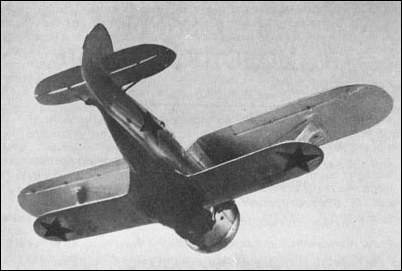
But most importantly, the distance between the air force bases and the targets of strikes was such that the allies could not enjoy the support of fighters, which would force them to make raids only at night, which would make them extremely ineffective.
So the effectiveness of the possible bombardment of the Soviet oil fields would be very doubtful.
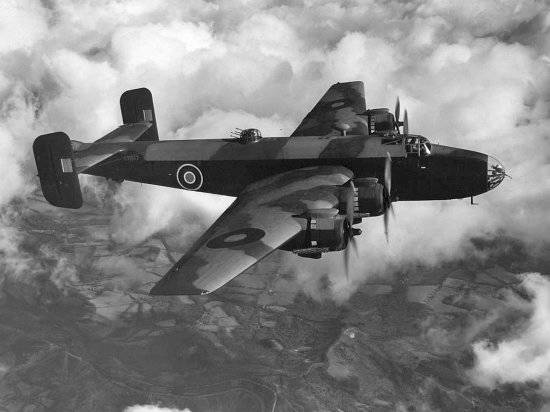
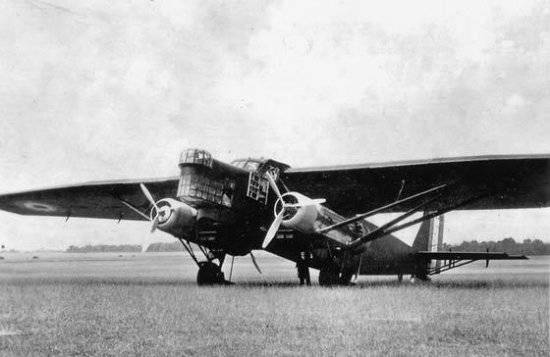
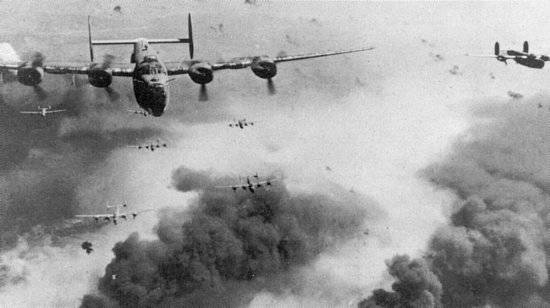
Information